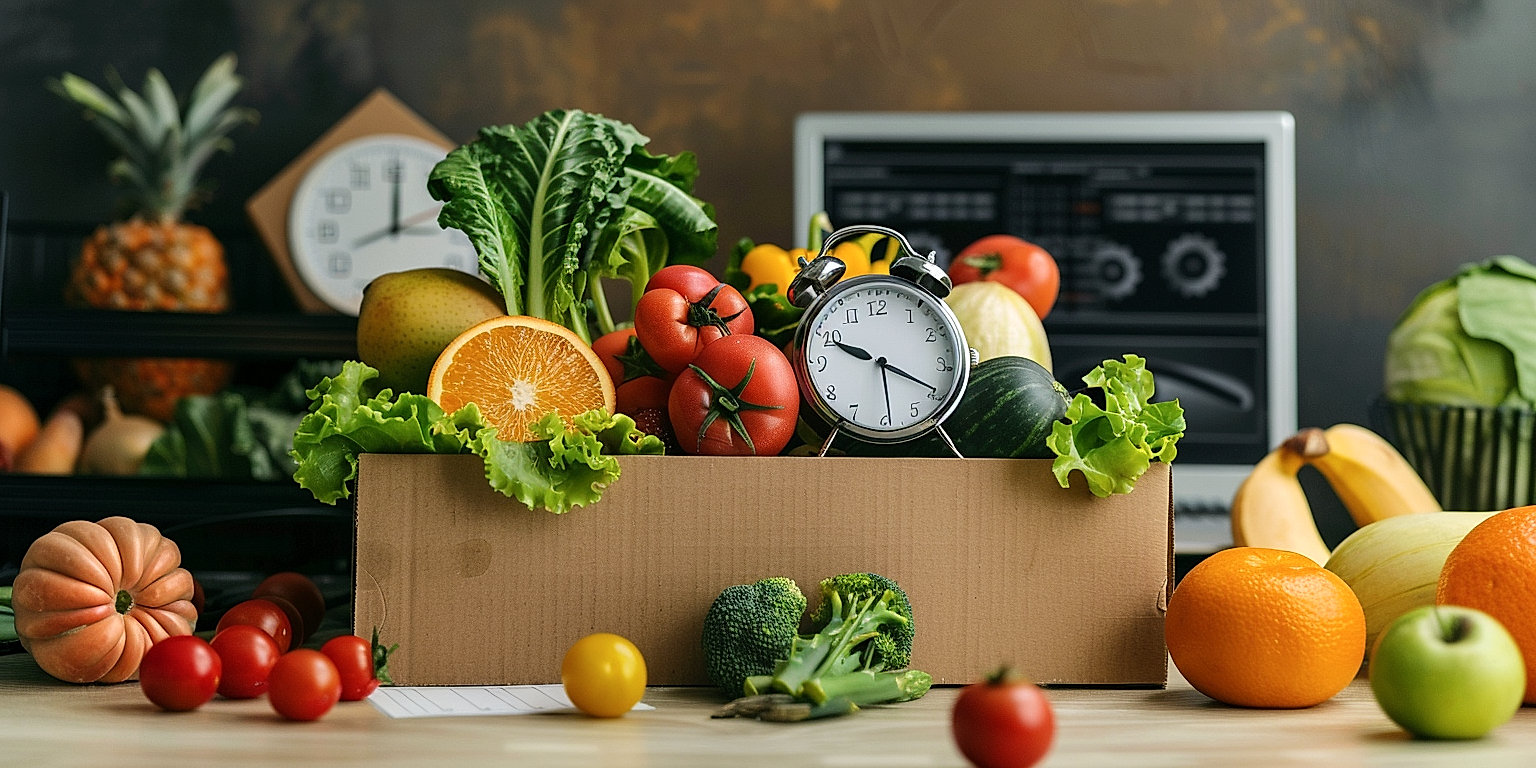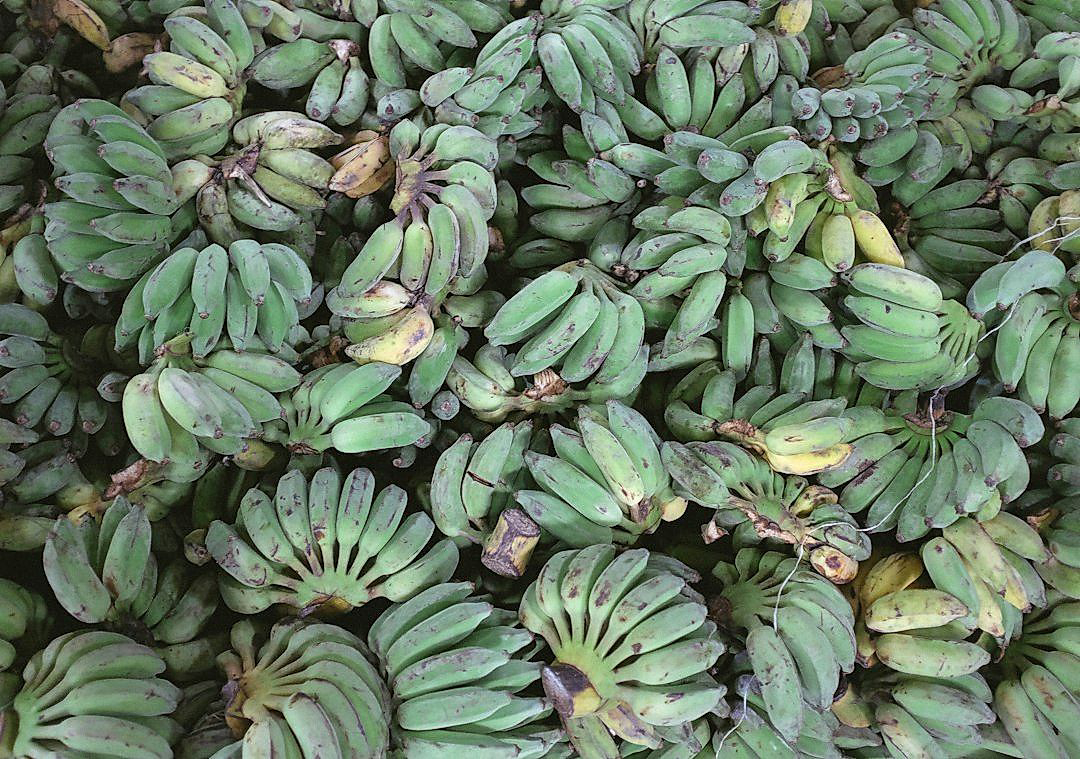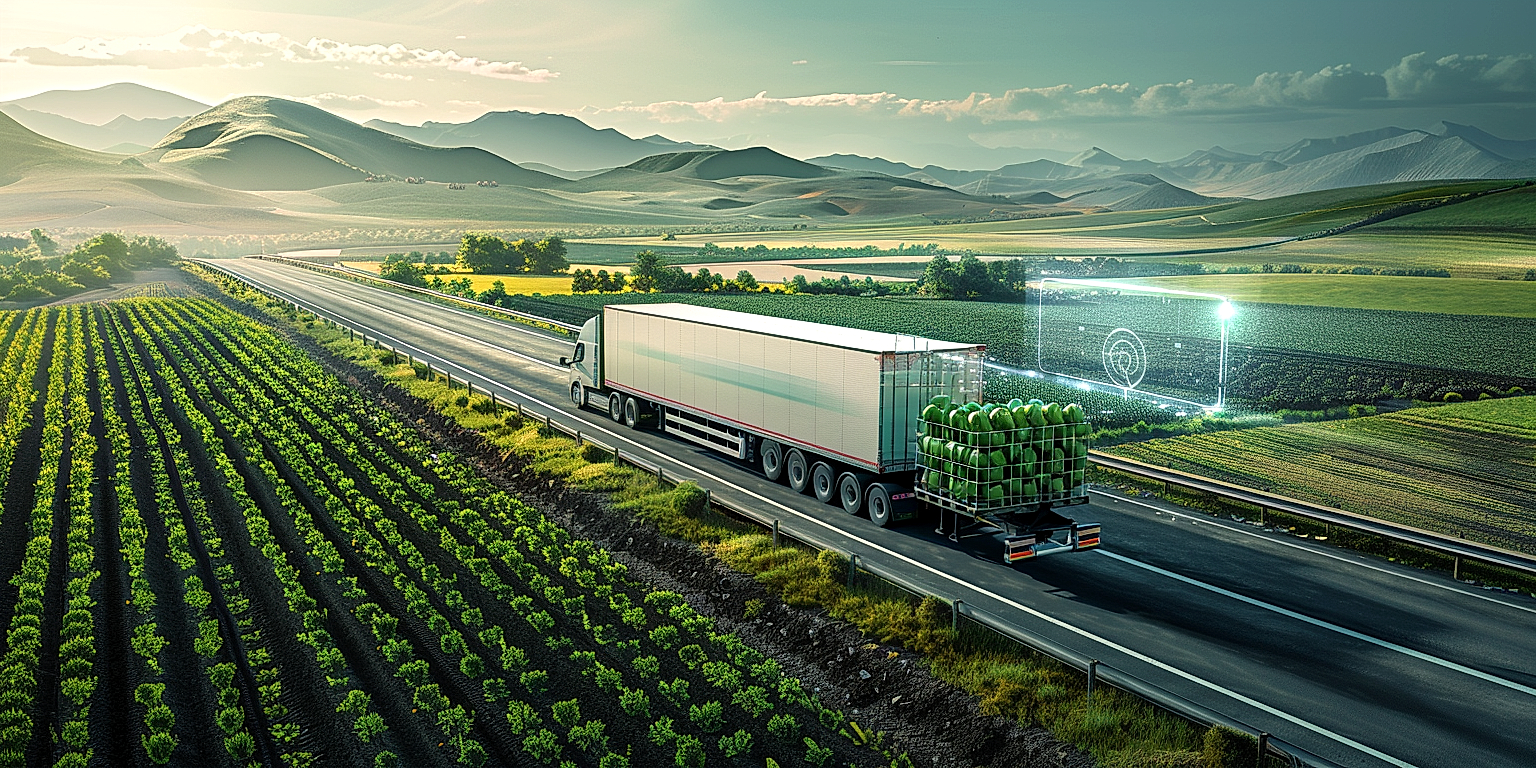Proper packaging and shipping of fresh produce pose unique challenges that require effective strategies to ensure optimal freshness and minimization of damage.
Leveraging proven, efficient methods can dramatically increase the life of the products while reducing costs associated with wastage.
In the fast-paced, global market, it is crucial to ensure that these commodities reach their destination in the best possible condition.
Enhancing the logistics and packaging operations for fresh produce is not just about sustaining quality; it’s an imperative strategy that impacts profitability and consumer satisfaction.
This article explores some of the most effective strategies that can be implemented today.
It provides insightful solutions, grounded in industry best practices, towards efficient produce packaging and shipping.
Contents
- Best Practices For Efficient Produce Packaging & Shipping
- 1. Use sturdy, eco-friendly containers for packaging produce.
- 2. Pack Tightly to Minimize Movement and Bruising
- 3. Use Insulated Packaging for Temperature-Sensitive Produce
- 4. Label packages accurately to prevent misdeliveries.
- 5. Use lightweight materials to reduce shipping costs
- 6. Maximize Space Efficiency in Containers/Boxes
- 7. Follow guidelines for perishable shipping.
- 8. Regularly Check Produce Quality Before Shipping
- 9. Invest in proper cushioning materials
- 10. Perform Regular Maintenance on Transportation Modes
- The Bottom Line
Best Practices For Efficient Produce Packaging & Shipping
1. Use sturdy, eco-friendly containers for packaging produce.
The importance of using sturdy, eco-friendly containers for packaging produce is undeniable.
Produce items can be delicate and need exceptional protection from potential hazards during transportation, further intensified through the use of robust containers.
Materials such as strong cardboard, bamboo, or various bioplastics can withstand substantial weight, maintaining the integrity and freshness of the produce.
The physical strength of the packaging system is paramount in preventing structural damage to both the container and the produce inside it.
Quality packaging enables retailers to deliver produce in the best possible condition, ensuring customer satisfaction and minimizing waste.
The second essential factor is the environmental impact of packaging materials.
While traditional plastic packaging is widely used in the produce industry, this type of packaging has significant environmental implications.
Alternatively, using eco-friendly materials helps reduce greenhouse gas emissions, contributing to achieving a more sustainable environment.
Eco-friendly containers are often recyclable or biodegradable, further reducing environmental harms.
Such types of containers can also improve a retailer’s reputation as it demonstrates their commitment towards environmental sustainability.
There are a variety of sturdy, eco-friendly containers available on the market that combines strength with sustainability.
Important factors to consider when choosing such containers include the type and weight of produce, possible weather conditions during transit, as well as recycling facilities available at the destination.
Further, retailers may need to conduct a cost-benefit analysis to consider whether opting for eco-friendly containers is economically feasible for their specific context.
An additional consideration may be the branding potential offered by custom-designed, eco-friendly packaging.
While the upfront cost may be higher, the long-term benefits – reduced environmental damage, improved customer perception, and elimination of plastic waste – makes the use of sturdy, eco-friendly containers an effective strategy for produce packaging and shipping.
2. Pack Tightly to Minimize Movement and Bruising
Packing produce tightly is a fundamental aspect of efficient packaging and shipping
When produce moves around in the package during shipping, it can lead to bruising and damage.
Therefore, it is crucial to properly pack produce to minimize movement.
Essentially, the less room produce has to move around, the lesser the chances of getting bruised or damaged.
Additionally, a tight packing helps in maximizing the use of available space.
This becomes especially useful when handling bulk shipments as it can significantly reduce shipping costs.
It’s also important to note that packing too tightly may cause produce to crush under pressure.
Hence, striking a balance is of the essence in this case.
Using packing materials like bubble wrap that can cushion the produce can be particularly helpful.
These materials can fill the empty spaces, restricting produce movement and preventing bruising.
Remember, the goal is to keep the produce safe and intact from the packing point to the delivery point.
Also, the type of produce being shipped will greatly influence how tightly you can pack items.
Some produce items might be more sensitive than others and will require careful handling.
Therefore, understanding the unique packing needs of each type of produce is essential.
Lastly, training your packing team on best practices is another important step towards achieving effective packaging.
When done right, tight packing can significantly reduce produce damage and contribute towards an efficient packaging and shipping process.
3. Use Insulated Packaging for Temperature-Sensitive Produce
Ensuring the optimal quality and lifespan of your produce begins with an understanding of its specific needs, including temperature requirements.
Many types of fruits and vegetables are temperature-sensitive, meaning that their freshness and quality will rapidly decline if they are not kept at the correct temperature during transport.
Using insulated packaging can provide the necessary temperature control to maintain the quality of your produce.
These types of packaging solutions are designed to keep their contents at a constant temperature, protecting them from extreme heat or cold that can cause damage.
Insulated packaging is especially useful for shipping produce over long distances, where fluctuations in temperatures can be particularly damaging.
Insulation materials such as foam or thermal bubble wrap are often used in the construction of this packaging, providing a buffer against temperature fluxes.
These materials work by trapping air, which acts as a natural insulator, creating a thermal barrier that helps to maintain the temperature inside the packaging.
When using insulated packaging, it is crucial to pay attention to the loading process.
The produce should be loaded in a way that allows for optimal airflow inside the package, as this helps to maintain a consistent temperature throughout.
Moreover, it is also important to monitor the temperature inside the boxes regularly to ensure that the insulation is performing adequately.
Investing in quality insulated packaging may increase your initial packaging costs; however, the return on investment can be significant when you consider the added value of your products arriving to customers in pristine condition.
Remember, the aim of using insulated packaging should also align with your sustainability goals.
Choosing insulation materials that are easily recyclable or compostable can help to minimize your company’s environmental impact.
In many cases, these types of insulated packaging materials are not only environmentally-friendly, but they also provide a high level of thermal performance.
In sum, using insulated packaging for temperature-sensitive produce is an integral part of maintaining product quality during transport and ensuring customer satisfaction.
4. Label packages accurately to prevent misdeliveries.
In the field of produce packaging and shipping, accuracy of labeling is critical for operations to run smoothly and efficiently.
A misdelivery can lead to a host of problems including financial losses, reputational damage and even legal issues, particularly when it comes to perishable goods.
The importance of clear and accurate labeling cannot be overstated as it is one of the cornerstones of efficient packaging and shipping.
In addition to providing clear and correct information about the destination, labels should also contain detailed descriptions of the produce being shipped. This could include variety, grade, or even a particular farm’s name.
Poorly labeled packages can lead to a multitude of issues such as spoilage when temperature-sensitive produce is not handled correctly or heavy financial losses due to misdelivery.
Hence, it is crucial to make sure labels are not only accurate but also readable and durable to withstand the journey from farm to store or restaurant.
The efficacy of barcode and QR code systems should also be considered as these technologies can help streamline tracking and tracing the route of the produce.
Keeping in mind that properly labeled packages can also aid in minimizing the possibility of theft, it is salient to ensure all necessary information is presented on the packaging, yet without giving away too much.
Beyond this, labels can serve as a critical communication tool between the harvester, packer, transportation company and the final recipient. This seamless transfer of information can greatly enhance operational efficiency.
This is why companies often invest in customized labeling solutions that cater to their specific needs and requirements, including meeting industry standards and regulations.
Automation can also be a game changer in terms of ensuring precisionand consistency in labeling. Modern label printers can include coding on demand, adjustments in real-time and instant corrections, reducing the chances of error.
Moreover, it is integral to train the team to follow labeling protocols consistently. Proper employee training not only boosts efficiency but also helps to prevent common mistakes that lead to misdeliveries.
Lastly, companies must also be prepared to constantly review and update their labeling strategies in response to changes in regulations, business operations or customer requirements to maintain the efficiency of their produce packaging and shipping.
Therefore, the efficiency of a company’s produce packaging and shipping is greatly determined by its ability to accurately label packages, maintain this accuracy, and make necessary adjustments when needed.
5. Use lightweight materials to reduce shipping costs
When it comes to shipping produce, choosing the right packaging materials goes a long way in reducing overall shipping costs.
Lightweight materials are typically favored because they don’t add much weight to the overall package, reducing the cost per shipment.
Materials such as cardboard, recycled paper, and certain types of plastic are often used to package produce since they are both lightweight and durable.
These materials, while not adding much weight, are also efficient at protecting the produce during transportation.
It’s important to factor in the cost of your packaging material when calculating shipping cost- lighter materials will often result in cheaper overall shipping costs.
Choosing the right materials for packaging is not only vital for the safety of the produce but also impacts the financial aspect of the shipping process.
Remember that the goal of using lightweight packaging is not just to reduce shipping costs but also to enhance the overall efficiency of the shipping process.
Overly heavy packaging can cause problems in the shipping process, from increased fuel expenditure to potential issues with loading and unloading the produce.
Moreover, heavy packaging may require special handling or equipment to load, which will only serve to like increase cost and time spent on the shipping process.
Likewise, lightweight packaging materials are easier to handle and maneuver, making the packing and unpacking processes more efficient and less labor-intensive.
Using lightweight materials also makes the process of recycling or disposing of the packaging easier, which is an added bonus in terms of sustainability.
In situations where a slight increase in weight can result in a much higher shipping cost, using lightweight packaging materials can make a significant financial difference.
It’s also important to balance the use of lightweight materials with the need for robust packaging- fragile or sensitive produce may require more protective packaging to ensure it reaches its destination without damage.
In conclusion, effectively using lightweight materials for produce packaging can lead to a wide range of benefits, notably financial, but also in terms of efficiency and sustainability.
While each situation might require a different approach, typically using lightweight materials proves to be beneficial for most produce shipping scenarios.
It is imperative, therefore, for businesses engaged in produce shipping to consider the advantages of lightweight materials and make informed decisions about their packaging strategies.
6. Maximize Space Efficiency in Containers/Boxes
Maximizing space efficiency in containers and boxes is a crucial aspect of efficient produce packaging and shipping.
Every inch of space in your package contributes to the overall shipping cost, so it is of utmost importance to take advantage of all the available space within your shipping containers and boxes.
The layout and positioning of the produce within the box is a key factor in space optimization.
By properly arranging the items in a way that fills any unnecessary gaps, you can increase the quantity of produce you can ship at a time and hence reduce your shipping costs.
There are certain packing techniques and methods like block stacking, brick stacking, and pinwheel stacking that have been proven effective in maximizing the use of space within your shipping containers and boxes.
Organizing the items in a systematic and efficient manner not only saves space but also provides adequate protection to the produce, considering their shape and vulnerability.
Using custom-shaped containers that fit the shape and size of your produce can help you further maximize the use of space within your shipping boxes.
Another way to improve space efficiency is by consolidating orders whenever possible.
This way, multiple smaller items can be combined into one larger package, which would take up less space than if each item was packed individually.
If you deal with different types of produce, consider mixing different types in the same container in a manner that benefits their preservation and doesn’t harm their quality.
The main requirement is to ensure that these products are compatible and won’t compromise one another’s freshness.
Using certain packing materials that are thin, lightweight, and sturdy can also contribute to the consolidation process by saving space and further reducing shipping costs.
Taking the extra time to strategically plan and organize your product packaging and shipping practices can significantly improve the space efficiency in your containers and boxes.
This requires detailed planning and careful execution, but the payoff is worth it in terms of savings on shipping costs and improved overall efficiency in your supply chain.
Remember, the goal is not just to fit as much produce as you can into a box, but to do so in a way that maintains the quality and freshness of the produce during transit.
By implementing these suggestions, you can make the most of your packing space and increase the efficiency and effectiveness of your produce packaging and shipping operations.
7. Follow guidelines for perishable shipping.
When shipping perishable goods such as fruits and vegetables, it’s vital to follow the specific guidelines set down for perishable shipping.
These guidelines vary from one country to another, but they all aim to ensure the freshness and quality of the produce during transit.
Failure to adhere to these guidelines can result in the produce spoiling, being seized by customs, or even causing health issues for consumers.
Therefore, it’s crucial to stay updated on these regulations and implement them in your shipping practices.
Many perishable shipping guidelines recommend the use of cold chain logistics.
This involves maintaining a constant, low temperature from the moment the produce is harvested until it reaches the consumer.
To successfully implement cold chain logistics, you would need specialized cold storage facilities and refrigerated transport.
An important part of this process is pre-cooling, which slows down the produce’s metabolic rate and reduces the chances of spoilage.
Another crucial guideline is ensuring your produce is properly packaged.
The packaging should be sturdy enough to withstand transport and handling, but it also needs to allow for proper ventilation.
Moreover, many guidelines also specify the need for appropriate documentation.
This could include invoices, packing lists, and necessary customs documents, all of which should be accurately filled out to avoid any possible delays or issues during transit.
Documentation is particularly important when shipping internationally as it aids in the smooth passing of the goods through customs control.
Lastly, it’s advisable to consider insurance for your perishable shipments.
While following all the guidelines significantly reduces the risk of spoilage or damage, shipping insurance provides an extra layer of protection in case something goes wrong.
By following these guidelines, producers can ensure optimal freshness and quality of their products, leading to satisfied customers and increased sales.
8. Regularly Check Produce Quality Before Shipping
Regular quality checks of the produce prior to shipping shouldn’t be undermined in any circumstances, photogenic produce can look prim but not maintain the operations on the ground.
The freshest of fruits and vegetables should be the only ones that make their way to the packaging section.
Produce with visible signs of rot, mould or disease should be promptly discarded.
Produce suppliers have to be vigilant at all times, ensuring that no spoilt produce slips through.
Maintaining freshness and high quality are crucial in the fresh produce industry.
Staleness, rot, or the presence of pests just cannot be overlooked. Strict, rigorous quality control checks are the absolute must.
It’s important to note that different types of produce may require different types of inspection.
Systematic quality checks are an integral part of the packaging and shipping process, noting to congratulate a practice that is done mediocrely.
For example, leafy greens might be checked for wilt or rot, while fruits might require a firmness test.
Quality control personnel should be properly trained to look for these signs.
They need to know the product and its potential issues inside out.
It’s not just about picking out the bad apples, a quality control team also plays an essential role in continually improving the company’s processing and shipping procedures.
Automation can play a part in quality control, technologies speed up the inspection process without sacrificing accuracy.
Electronic nose technology, for instance, can detect aromatic compounds associated with spoilage long before the human nose can.
Quality checks are also about maintaining the reputation of your company.
Your customers have certain expectations about the freshness and quality of your produce. Meeting these expectations consistently is crucial to securing your business’s success.
9. Invest in proper cushioning materials
The importance of investing in proper cushioning materials for the efficient packaging and shipping of produce can’t be overstated.
Produce items, being perishable and delicate, require a high standard of care during handling, packaging, and transportation.
Without proper cushioning materials, the produce risks getting damaged, leading to significant losses for farmers, retailers, and consumers.
Certain types of produce, such as fruits and vegetables, are prone to bruising which negatively affects their quality and shelf life.
The use of specialized cushioning materials aids in minimizing such damages.
There are various types of cushioning materials available in the market to ensure the safety of produce during transportation.
These materials include bubble wrap, foam peanuts, inflated air pillows, molded pulp inserts, among others, and are specifically designed to provide optimum protection to the packaged items.
It’s crucial to invest in high-quality cushioning materials that can withstand the rigors of transportation.
Likewise, the cushioning material should be appropriate for the type of produce being shipped.
For instance, bubble wrap and foam peanuts may be ideal for fruits, while inflated air pillows and molded pulp inserts may be suitable for vegetables.
Another vital aspect to consider while investing in cushioning materials is their environmental impact.
Eco-friendly cushioning materials made from recyclable materials are the preferred choice as they minimize the environmental footprint.
Investing in these sustainable options not only safeguards the produce but also contributes to environmental conservation.
Cushioning materials should also be easy to use and allow for efficient packaging.
The choice of cushioning materials plays a significant role in determining the overall packaging and shipping costs.
Therefore, it’s prudent to conduct a cost-benefit analysis to identify the most cost-effective cushioning materials that provide adequate protection to the produce.
By investing in proper cushioning materials, businesses can ensure the integrity of the produce during transportation, leading to customer satisfaction and business growth.
10. Perform Regular Maintenance on Transportation Modes
Performing regular maintenance on transportation modes is a critical strategy in efficient produce packaging and shipping.
Keeping your transportation modes in tip-top condition minimizes the likelihood of mechanical failures that could delay deliveries.
Delay in produce delivery could lead to produce quality deterioration jeopardizing not just customer satisfaction but also the reputation of your business.
Preventive maintenance also significantly reduces the risk of costly repairs or replacements down the line.
The transportation of fresh produce generally requires proper temperature regulation, making regular checks and maintenance of cooling systems imperative.
A healthy cooling system ensures optimal temperature during transit, preserving the freshness and quality of the produce.
Similarly, regular maintenance should extend to other essential vehicle components such as tires, engine, and fuel system to ensure transportation efficiency.
As much as mechanical maintenance is key, so is cleanliness.
A clean storage and transportation environment prevent contamination, further maintaining produce quality.
It’s good practice to establish a regular maintenance schedule, following recommended service intervals for different vehicle components.
Doing so ensures that all parts are operating at optimal efficiency, translating to fuel efficiency and reduced emissions, which is beneficial not just for business but also for the environment.
Additionally, documenting every maintenance conducted helps to keep track of vehicle performance and identify potential problems early on.
Keep an updated record of mileage, fuel consumption, tire treads and oil levels, among other elements; this data helps in anticipating potential issues and scheduling regular maintenance accordingly.
Consider hiring a dedicated fleet maintenance team, if financially feasible, to handle all maintenance tasks efficiently.
In summary, regular vehicle maintenance is not just a cost-saving strategy but a critical practice to maintain produce quality and ensure timely delivery.
Remember, the freshness of your produce goes hand in hand with the health of your transportation modes.
The Bottom Line
Adopting effective and eco-friendly packaging methods is instrumental in maintaining produce quality during shipping.
Ensuring that containers are sturdy, well-insulated and packed tightly can considerably reduce the risk of produce damage, while accurately labelled packages can help prevent misdeliveries.
Opting for lightweight materials and maximising space efficiency can result in significant savings in shipping costs.
Furthermore, adhering to guidelines for perishable shipping is of paramount importance.
Regular checks on produce quality, investing in suitable cushioning materials, and regular maintenance of transportation modes can greatly enhance the overall efficiency and effectiveness of produce transportation.




